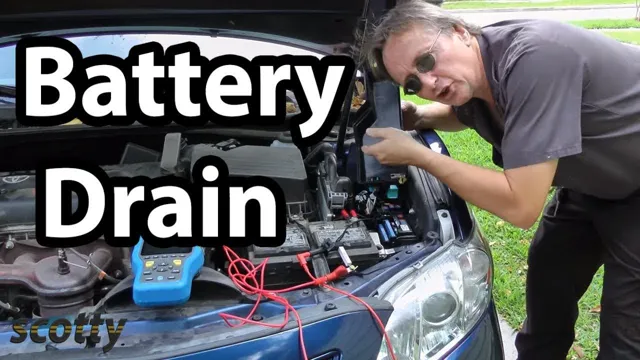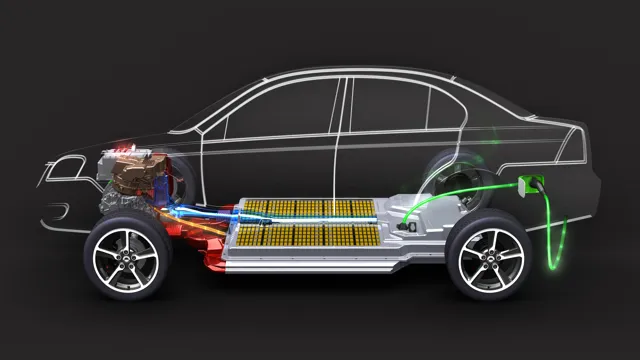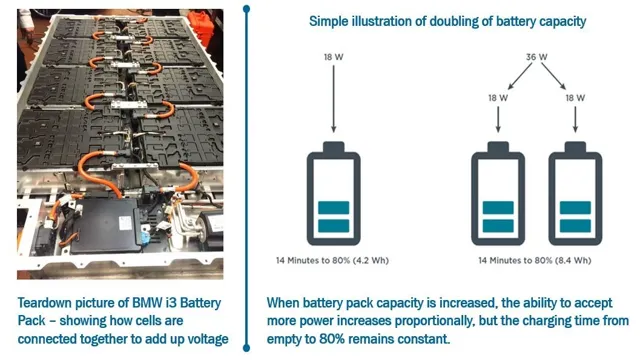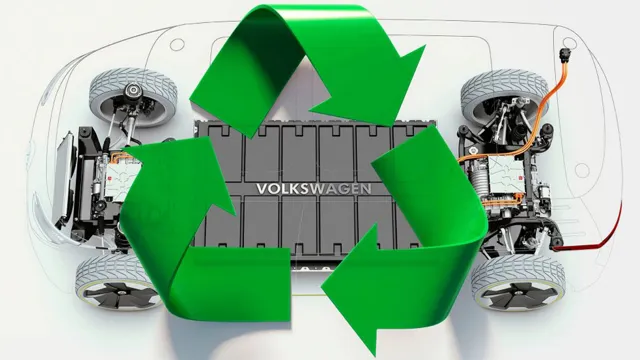Diagnosing and Fixing Car Battery Drain Electrical Problems: The Ultimate Guide
Have you ever walked out to your car, just to find that it won’t start? One of the most common reasons drivers experience this frustrating inconvenience is due to a drained car battery. But why does this happen? There are plenty of reasons why your car battery may be losing power, and it’s important to understand what they are in order to prevent this issue from happening in the future. From leaving lights on to a faulty alternator, there are many factors that can contribute to a dead car battery.
In this blog, we’ll explore some of the top reasons why your car battery may be draining, and what steps you can take to prevent it from happening again. So, let’s dive in and learn more about this pesky car problem.
Common causes of car battery drain
Car battery drain due to electrical problems can be caused by a number of different culprits. One common culprit is leaving your headlights, interior lights, or other electronics on when the car is turned off. This can quickly drain the battery, especially if it is an older model.
Another potential cause of car battery drain is a faulty alternator, which fails to recharge the battery properly while the car is running. This can cause the battery to slowly lose charge until it eventually dies. Additionally, corroded or loose battery connections can also lead to electrical issues and battery drain.
It’s important to keep an eye out for these common issues to prevent car battery drain and keep your vehicle running smoothly.
Electrical problems
Electrical problems are one of the most common issues that can arise with your car. One of these problems is the dreaded car battery drain. This issue can be quite frustrating, as it leaves you stranded without a functioning vehicle.
There are a number of different causes of car battery drain, including leaving your lights on overnight, a malfunctioning alternator, and a poor connection between the battery and the rest of the car’s electrical system. Other potential causes include a faulty starter motor, a parasitic draw on the battery, or a damaged battery itself. To avoid car battery drain, it’s important to take preventative measures such as turning off all electrical systems when you park your car, regularly checking your battery’s health, and having any necessary repairs or replacements done promptly.
By taking these steps, you can help to ensure that your car’s electrical system stays healthy and reliable.
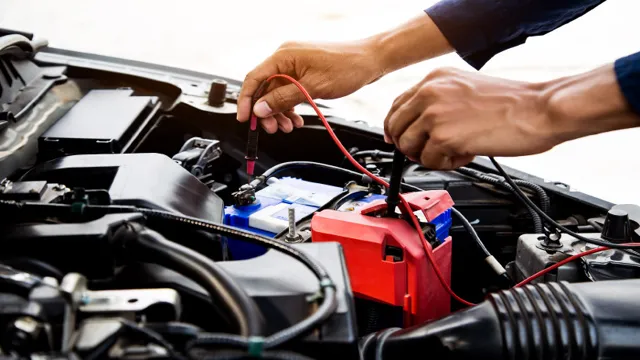
Frequent short trips
Frequent short trips can be tough on your car’s battery. When you’re constantly starting and stopping your car, it doesn’t have enough time to recharge the battery fully. This can lead to the battery draining faster than it should, leaving you with a dead battery and a car that won’t start.
Other common causes of car battery drain include leaving your headlights or interior lights on accidentally, having a weak alternator that cannot recharge the battery fully, or using too many electrical accessories. To avoid battery drain, try to combine your errands into one trip instead of making multiple short trips, and make sure you turn off all lights and accessories when you park your car. If you’re still having problems with battery drain, it may be time to have your battery and alternator checked by a mechanic.
Remember, regular maintenance is the key to keeping your car running smoothly, so don’t put off those check-ups!
Parasitic drain
Car battery drain can be frustratingly common, leaving you stranded without warning. One of the most common causes is parasitic drain, which occurs when a faulty electrical component or system continuously draws power even when the engine is switched off. This can be caused by anything from a malfunctioning alarm system to a faulty alternator, and it can happen without any warning signs.
Another common cause of battery drain is leaving lights or other electronics running when the engine is off, and even a small amount of drain can quickly add up over time. To avoid this, always turn off everything before leaving your vehicle, including the radio and air conditioning. Other common culprits include a malfunctioning ignition switch, a bad battery connection, or an old battery that needs to be replaced.
By keeping an eye out for these common issues and addressing them as soon as possible, you can avoid the frustration of a dead battery and ensure your car always starts when you need it to.
How to diagnose car battery drain
If your car battery keeps dying and you’re not sure why, it’s important to diagnose the issue to avoid getting stranded. Electrical problems are a common cause of car battery drain. The first step is to check if any lights or electronics are left on when the car is turned off.
If not, it’s likely there’s a parasitic draw on the battery. One way to check for this is to disconnect the negative battery cable and use a multimeter to measure the current flow. If it’s above 50 milliamps, there’s a possible parasitic draw.
From there, you can start to systematically remove fuses to isolate the circuit causing the draw. It’s important to check all components and wiring in that circuit to determine the root cause of the electrical problem. By taking these steps, you can identify and resolve issues with your car battery drain, ensuring your vehicle remains reliable and functional.
Testing the charging system
Testing the charging system in your vehicle is crucial to identifying any potential problems with your car battery. Battery drain can have various causes, from leaving headlights on to a faulty alternator. To diagnose battery drain, you must first use a voltmeter to check the battery’s voltage level.
If the voltage level is below the recommended level, you may require a replacement battery. Suppose the voltage level is normal, you should then proceed to check the alternator to verify that it is working correctly. A malfunctioning alternator is the primary reason for battery problems, and you can easily check this by performing a simple test with a voltmeter.
An alternator that is not working correctly will likely produce a low voltage output, causing the battery to drain. By using these techniques, you can successfully diagnose and fix any issues with your vehicle’s charging system and get back to enjoying your ride in no time.
Checking for parasitic drain
If you’re experiencing car battery drain and can’t figure out the root cause, there’s a chance that parasitic drain is to blame. This happens when a device or system in your vehicle continues to draw power long after you’ve shut off the engine. To diagnose this issue, you’ll need to perform a parasitic draw test by connecting a multimeter between the negative battery cable and the negative battery terminal.
If the reading is over 50 milliamps, there’s a potential parasitic drain issue. To find the culprit, you’ll need to isolate each device or system by removing fuses one by one until the reading drops to a normal level. It’s important to note that this can be a time-consuming process, but it’s worth it to avoid further battery drain issues down the road.
Don’t be afraid to seek professional help if you’re unsure about performing this test yourself.
Preventing car battery drain
Car battery drain is one of the most common electrical problems that car owners face. When your car battery drains unexpectedly, it can be frustrating and inconvenient, leaving you stranded and unable to start your car. To prevent this issue, there are a few things you can do.
Firstly, make sure to turn off all electronics when you park your car, including the radio, headlights, and interior lights. This will help to conserve battery power and prevent unnecessary drain. Additionally, keeping your battery clean and regularly checking for corrosion can help to ensure that it functions properly.
If you’re still experiencing battery drain, it may be time to replace your battery, as old batteries can lose their ability to hold a charge. By taking these preventative measures, you can help to prevent car battery drain and keep your car starting smoothly.
Regular maintenance
Regular maintenance is crucial to keeping a car’s battery from draining. One way to prevent battery drain is to regularly check and clean the battery terminals. Dirty or corroded terminals can hinder the flow of electricity and cause the battery to drain.
Another important step is to ensure that all lights and accessories are turned off when the car is not in use. Leaving them on can cause a slow, steady drain on the battery. It’s also important to drive the car regularly to keep the battery charged.
A car that sits idle for long periods of time can cause the battery to discharge and lose its ability to hold a charge. By giving the car some regular use, the battery can stay charged and avoid unnecessary drain. By taking these simple steps and staying on top of regular maintenance, car owners can prevent the frustration and inconvenience of a dead battery and ensure reliable performance.
Using a battery tender
Car battery drain is a common problem faced by many car owners, especially those who use their cars infrequently or leave them parked for extended periods. In such instances, the battery tends to lose its charge, leading to difficulties in starting the car. This is where a battery tender comes in handy.
A battery tender is a device that maintains the charge of a car battery by delivering a small amount of current. It’s a simple and effective solution to prevent battery drain and ensure that the battery remains charged and ready for use. Using a battery tender is incredibly easy as you just need to connect it to the battery and let it do its job.
Furthermore, a battery tender is cost-effective and can help extend the lifespan of your car battery significantly. So, if you want to prevent battery drain and ensure that your car starts up quickly, investing in a battery tender is a no-brainer!
Conclusion
In the world of car battery drain and electrical problems, it’s all about finding the culprit. Just like a game of Clue, you have to work your way through the suspects (ignition switch? parasitic draw?) and follow the evidence (dead battery? flickering lights?) to solve the mystery. But don’t worry, with a little detective work, a lot of patience, and maybe some help from a trusted mechanic, you’ll be able to crack the case and keep your car running smoothly.
So, put on your sleuthing hat and let’s get to the bottom of this electrifying mystery!”
FAQs
Why is my car battery draining so quickly?
There could be a number of reasons why your car battery is draining quickly, such as leaving the lights or radio on when the car is turned off, a faulty alternator, or a parasitic draw from an electrical component.
How long should a car battery last?
On average, a typical car battery lasts between 3-5 years. However, the lifespan of a battery can vary depending on factors such as usage, weather conditions, and maintenance.
Can cold weather affect a car battery?
Yes, cold temperatures can negatively affect a car battery’s performance as it reduces the battery’s ability to produce power. It’s important to keep the battery charged and in good working condition, especially during the colder months.
What are the signs of a failing car battery?
Some signs of a failing car battery include slow engine cranking, dimming headlights, a swollen battery case, unusual electrical problems, and a rotten egg smell. It’s important to have your battery checked if you notice any of these symptoms.
